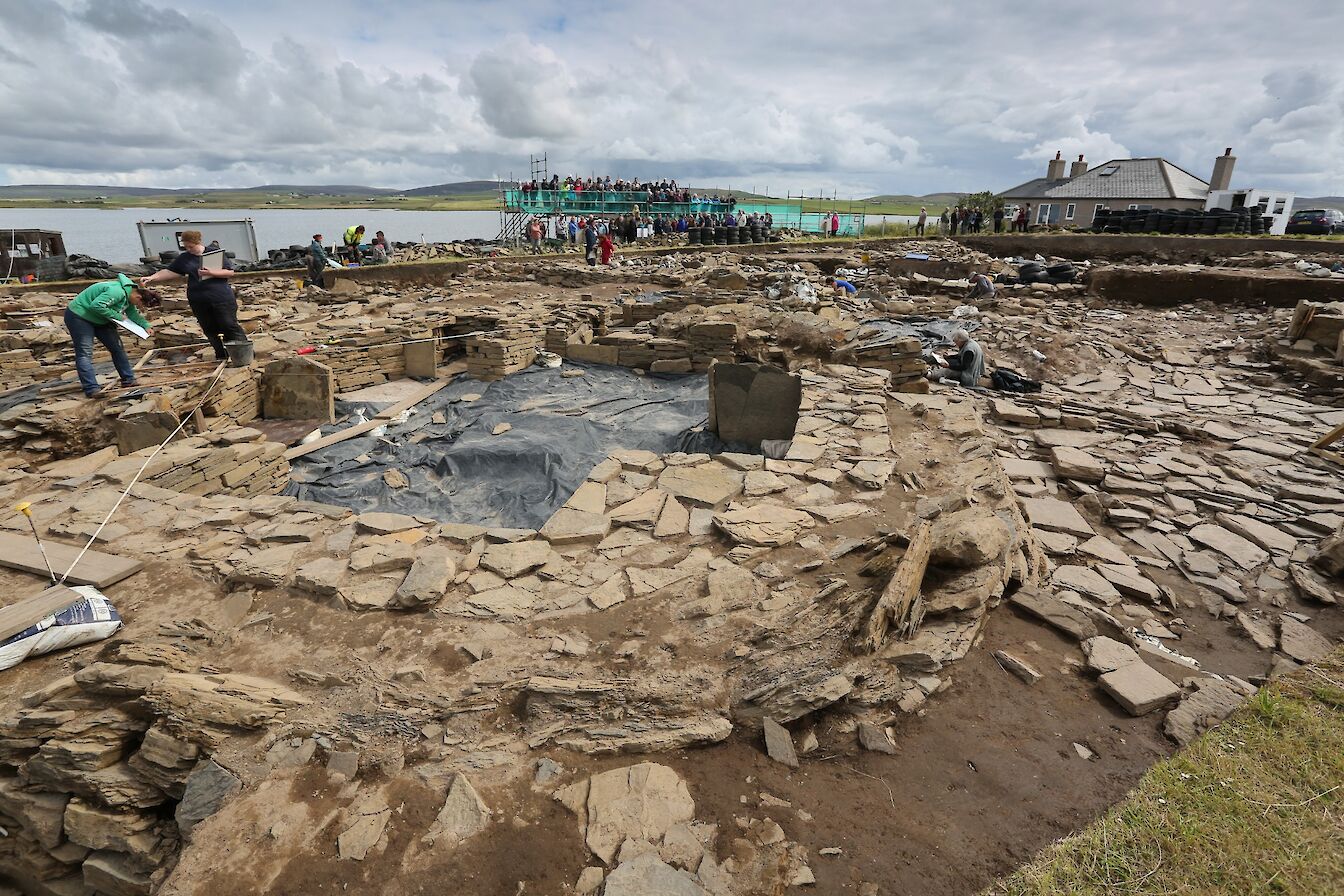End of a Major Archaeological Project
The excavation of the Ness of Brodgar, a crucial Neolithic site in Orkney, is concluding after 20 years of meticulous research. Situated on a narrow strip of land between two lochs, the site has revealed 40 ancient structures, indicating it was a significant settlement from around 3500 to 2400 BC.
Preservation Efforts
To protect the site from weather-related erosion, the decision has been made to cover the Ness of Brodgar. The stone structures, which are prone to deterioration due to their quarried nature, will be buried under the spoil heaps of soil that were removed during the excavation. This method aims to safeguard the site while avoiding the high costs and logistical challenges of constructing a permanent protective structure.
Emotional Farewell and Future Research
Nick Card, chair of the Ness of Brodgar Trust and director of the excavation, expressed the emotional impact of concluding the dig. The project has not only been a significant part of his life but has also fostered a strong sense of community among the team. Despite the excavation ending, research and analysis of the findings will continue to piece together the site’s historical narrative.
Tourism and Heritage
The Ness of Brodgar has attracted considerable attention from tourists, with 20,000 visitors in the past year alone. Martin Fleet, chairman of Destination Orkney, praised the site for its contribution to local tourism and its role in highlighting Orkney’s rich archaeological heritage. Although the dig is ending, other notable Neolithic sites in Orkney, such as the Ring of Brodgar and Skara Brae, will remain open to the public.
Legacy and Future Prospects
The closure of the excavation is a bittersweet moment for the team, but it is viewed as a necessary step for preserving the site for future generations. As the Ness of Brodgar is covered, the hope is that future archaeological techniques will allow for further discoveries. The goal is to ensure that the site’s legacy remains a vital part of Orkney’s history for years to come.


